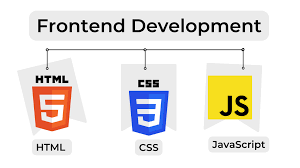Description
Frontend Development (HTML, CSS, JavaScript Frameworks)
What is Frontend Development?
Frontend Development focuses on designing and developing the user interface (UI) and user experience (UX) of web applications. It involves creating visually appealing, interactive, and responsive designs that users interact with directly.
Frontend developers use HTML, CSS, and JavaScript frameworks to build modern, scalable, and dynamic web applications that work across multiple devices and browsers.
Core Technologies in Frontend Development
1. HTML (HyperText Markup Language)
🔹 Defines the structure of a webpage
🔹 Uses elements like <div>, <h1>, <p>, <img>, and <a>
🔹 Forms the foundation of web content
2. CSS (Cascading Style Sheets)
🔹 Styles and enhances the visual presentation of a website
🔹 Uses selectors, properties, and responsive design techniques
🔹 Enables animations, layouts, and themes
3. JavaScript (JS)
🔹 Adds interactivity and dynamic elements
🔹 Supports event handling, DOM manipulation, and API communication
🔹 Works with both Vanilla JS and modern frameworks
Popular JavaScript Frameworks & Libraries
1. React.js (By Facebook/Meta)
✔️ Component-based UI development
✔️ Virtual DOM for faster rendering
✔️ Used for single-page applications (SPAs)
2. Angular (By Google)
✔️ Full-fledged frontend framework
✔️ Built-in dependency injection and TypeScript support
✔️ Ideal for enterprise applications
3. Vue.js
✔️ Lightweight and progressive framework
✔️ Reactive data binding and component-based architecture
✔️ Simple learning curve compared to React and Angular
4. Svelte
✔️ Compiles components to optimized JavaScript
✔️ No virtual DOM, leading to faster performance
✔️ Simpler syntax and less boilerplate code
5. Next.js (React Framework)
✔️ Server-side rendering (SSR) and static site generation (SSG)
✔️ Optimized for SEO and performance
✔️ Ideal for e-commerce and content-driven applications
Frontend Development Best Practices
✔️ Responsive Design – Ensuring adaptability across devices (mobile, tablet, desktop)
✔️ Performance Optimization – Lazy loading, code splitting, and asset compression
✔️ Cross-Browser Compatibility – Ensuring seamless performance in Chrome, Firefox, Safari, and Edge
✔️ SEO-Friendly Development – Using semantic HTML, meta tags, and accessibility best practices
✔️ Security Measures – Preventing XSS, CSRF, and securing user input
✔️ Version Control – Using Git for collaboration and tracking changes
Frontend Development Workflow
1. Planning & UI/UX Design
- Wireframing & prototyping using Figma, Adobe XD, or Sketch
- Creating user flow diagrams and component structures
2. HTML & CSS Development
- Building semantic HTML structure
- Styling with CSS3, SCSS, or Tailwind CSS
3. JavaScript & Frameworks Implementation
- Adding interactivity using Vanilla JS or frameworks like React/Vue
- Fetching data from APIs (REST, GraphQL)
4. Testing & Debugging
- UI testing with Jest, Cypress, or Selenium
- Browser compatibility testing
5. Deployment & Optimization
- Deploying via Vercel, Netlify, AWS, or Firebase
- Performance optimization using Google Lighthouse & Webpack
Challenges in Frontend Development
⚠️ Keeping Up with Rapid Technology Changes – New frameworks and updates frequently emerge
⚠️ Performance Optimization – Ensuring fast load times without sacrificing quality
⚠️ Cross-Browser Issues – Maintaining consistent UI across different browsers
⚠️ State Management Complexity – Managing data flow in large applications (Redux, Vuex, Zustand)









Reviews
There are no reviews yet.